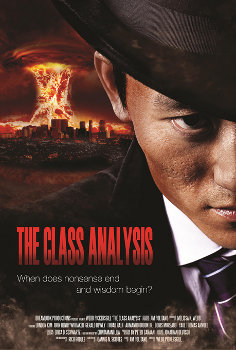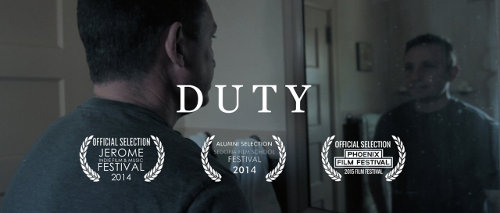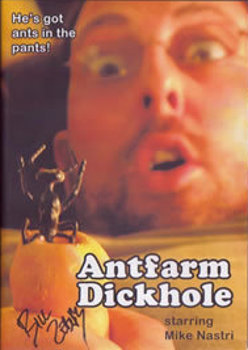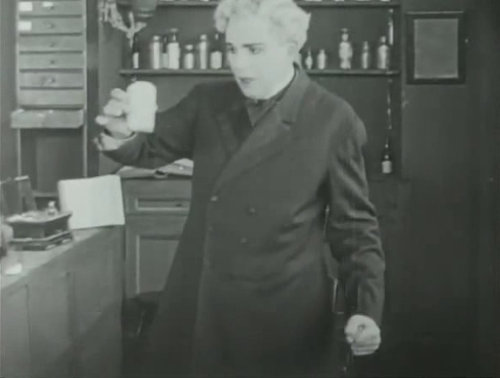Director: Yojiro Takita
Stars: Kaoru Kaze and Yuka Takemura, Naoto Takenaka and Yukijiro Hotaru
When I found out about this Japanese
pinku film, I had to see it for my Weird Wednesday series because it refuses to play by any of the rules we’ve come to expect for cinema. For a start, this is the 23rd movie in a series, something almost unprecedented in the west where we believe the
Friday the 13th franchise has gone on way too long after ten original features, one crossover with
A Nightmare on Elm Street and one reboot. Have you ever seen the 23rd movie in any series? I’ve seen a couple, like
The Lone Wolf in London, which in 1947 was the 23rd and penultimate outing for Michael Lanyard, the jewel thief turned private detective of the title, but that was hardly a consistent series with Gerald Mohr the ninth actor to play the part in thirty years. I’ve seen all thirty
Carry On movies, so 1972’s
Carry On Matron was another 23rd movie for me, but those films were a thematic series rather than a real one. Perhaps this one is too, but I doubt I’ll check out the rest as there are at least 120 movies in this series! That’s truly insane.
What’s even more insane is that it’s a series called
The Groper Train or, according to other translations,
Molester Train. You know all those stories you’ve heard about the Japanese having weird sexual fetishes? Well, I’ve never been to Japan, so I really shouldn’t say, but when used panty vending machines do exist on Tokyo streets, tentacle porn goes back to 19th century woodblock prints and there are a hundred and frickin’ twenty
Molester Train movies, it’s rather hard to argue against the idea. The
Groper Train concept is based on the fact that men, often older men, grope women, often sailor suited schoolgirls, on Japanese trains so often that some transit companies now reserve some carriages for women only. A 2001 survey suggested that 70% of female students at two high schools had been groped. It’s illegal, of course, but a
chikan-minded soul can always go to a girls’ club instead and pay $130 to legally grope his choice of girl on a full size reproduction of a train. What a surreal way to make a living!
Another weird aspect to this concept is that, unlike in the west, where major actors or directors are often embarrassed by the movies they started out in and try to pretend they don’t exist, the Japanese have no problem with genre material that extends to
pinku or soft porn films. I noticed when I was devouring the Japanese films of the fifties and sixties that actors would often alternate arthouse films with
kaiju movies. Takashi Shimura, for instance, made nineteen pictures for Akira Kurosawa, for whom he gave one of the best performances of all time in
Ikiru. In 1954 he was the leader of
The Seven Samurai and the doctor in
Godzilla; in 1955 he made
I Live in Fear and
Gigantis: The Fire Monster; in 1956
Throne of Blood and
The Mysterians. No stigma was attached to the latter half of each pairing. I mention that here because Yojiro Takita, who directed eleven
Groper Train movies, including this one, would in 2008 accept the Academy Award for Best Foreign Film for his picture,
Departures.
Even with that background, I still wasn’t prepared for
Search for the Black Pearl. It’s clearly a pinku film, with everything revolving around sex and a whole slew of groping scenes in which actual intercourse is almost an afterthought. Yet it’s also a mystery, a comedy and a drama, though rarely all at once. It even becomes a romance at one point, which is rather jarring. And, it begins and ends like a horror movie. Do all these genres really get mashed together into one soft porn flick over a short 64 minute running time? You may need to watch this yourself to figure out how that happens, but I’ll do my best to cover it. Never mind all those sex scenes, because anyone actually wanting to get off on the movie would do better with the visuals off at those points because there’s almost never any dialogue or accompanying score to take away from the young Japanese ladies moaning. What’s interesting about the film isn’t the sex, which is a distraction from the sheer imagination on show during the rest of the film.
In this film, the Black Pearl isn’t a pirate ship, it’s just a black pearl, mounted onto a ring worn by Zhang Zuolin, who is killed by a Japanese Army Unit 69 bomb in Manchuria in 1928. It’s promptly scavenged off his severed hand by Gohei Yamamori, a Japanese soldier who can’t believe his luck in finding the largest pearl in the world. When we leap forward to 1984 Tokyo, where he doesn’t look much older, we discover that it’s worth a cool two million dollars. Gohei soon dies though, literally shagged to death by his much younger wife, Matsuko, who displays her true feelings by asking him where he hid the thing even during sex. He won’t tell her, of course, but he does leave her a clue with his final words, which are ‘pussy print’. No, he isn’t referring to the octopi in 19th century woodblock
hentai, he’s really talking about a framed work of art that’s hanging on his wall. It’s an abstract and monochrome piece, created by covering the labia of his niece, Yoko, with ink, then pressing them onto a piece of paper.
Now, why any niece would even consider doing this, I have no idea, but it’s hardly the most outrageous or unbelievable element in this picture, so perhaps we should pass it by with the note that this was the only pussy print in Gohei’s collection to survive a fire that destroyed all his others and took half of this one too. ‘What a unique hobby!’ cries Ippei Kuroda, the private detective whom Matsuko promptly hires to investigate the pussy print and he isn’t kidding. Now, I knew about
chikan but I didn’t know anything about pussy prints and I don’t want to spend an hour or six filtering through animated cat gifs to figure out if they’re a major Japanese fetish or not. Watching this PI test the process on his assistant, Hamako, suggests that it does, at least, make more sense than groping schoolgirls on a train. Then again, I have trouble understanding the latter concept. When your fetish relies on the subservient nature of Japanese women to not report you for sexual assault, it’s probably not a particularly promising fetish.
Now, of course, Kuroda immediately gets to indulge in
chikan, because he’s a dedicated private eye and Yoko is a mystery. Apparently she was close enough to Gohei to make a pussy print for him but not close enough to actually leave him any contact details and his wife only knows that she has two big moles on her thigh, not exactly much to go on. So, given that the population of Tokyo, the most crowded metropolis in the world, was over 11 million in 1984, how would you go about tracking down which vagina made this particular piece of art? Well, Kuroda puts on some kind of gas mask apparatus, jumps on the train, gropes every young lady he can find and gets a pussy print from each of them in the process. That’s the same idea you had, right? Well, if it’s the most ridiculous thing that you’ve ever heard in your life, it won’t help to tell you that it works pretty quickly. In only a few days of madcap comedy, accompanied by a madcap piece of music and grossout visuals, Kuroda does find Yoko, only to wonder how that even helped at all.
Now his only option is to solicit the assistance of Mr Matsuki, a ‘great mystery writer’ who appears on a show called
20th Century’s Mysteries. He’s a really strange man, a sort of hunchback pervert who floats about like a ghost with his head stuck out from his body and his bottom lip stuck out from his head. He’s a little like Columbo if Columbo was played by a Japanese Donald Duck. His method of investigation is to have Yoko strip naked and open wide so he can inspect inside her vaginal cavity with a magnifying glass and mutter things like, ‘Your pleasure center is the key to finding the Black Pearl.’ Of course, this clinical examination ends in sex, because everything ends in sex in this picture, whose moral message appears to be that, no matter who you are, where you are or what you choose to do to a young lady you’ve never previously met, she’ll always be politely happy and be turned on enough to submit to your every whim. I doubt that’s a good message to send out to a country with a chikan problem, but then I’m not Japanese.
As if to emphasise that
Search for the Black Pearl isn’t remotely like anything you might have caught on Skinemax, we’re even given a couple of inside out shots here, as in pussy POV. Outside the framework of this movie, I might have suggested that looking out from inside a young lady’s vagina to see an old man looking in with a magnifying glass, might be a nightmarish experience not likely to be included in a soft porn movie, but this film does seem to revel in doing things that we don’t expect. Next up is a diversion to a locked room mystery, that old chestnut where someone is apparently murdered but in a room whose doors and windows are locked from the inside. Here, that’s Haruo, Gohei Yamamori’s son, which we’re not upset about in the slightest because his response to discovering that there’s no inheritance is to rape his stepmother. No, those aren’t spoilers, by the way, because she’s all for it and he’s not important at all. It just leads to a weird breaking of the fourth wall as maniacal Mr Matsuki challenges us to solve the riddle.
I can’t believe I’m writing this, but the mystery aspect of this film is surprisingly capable. Sure, there’s no shock to whodunit, but how it was done is an intricate little manoeuvre that is more impressive than the gimmicks I’ve seen in Hollywood movies lately. We even watch it done and it’s agreeably clever. What’s more, solving the murder doesn’t end the film as the black pearl, that two million dollar MacGuffin of the piece, still has to be located and there’s a clever set of sequences left to show how that happens. Again, it feels surreal to be avoiding spoilers in a review of a 64 minute Japanese soft porn flick, but these final scenes are handled magnificently, featuring a delicious stew of irony, karma, revenge, slapstick comedy, cameraderie, horror, romance, sex and, of course, groping a young lady on a train. You try to write a film that features all that, let alone just a finalé!
Search for the Black Pearl is surely intended to give perverts a safe and legal thrill, but this is a far more imaginative way to do that than it ever needed.
I have to say that, while it’s not exactly a good film, I enjoyed it immensely and not because of the sex. I’m hardly going to complain about young Japanese ladies getting naked and moaning a lot, as that sort of thing would improve most movies, but there’s way too much of it and it’s far too unimaginative, oddly given how imaginative everything else is. If it wouldn’t take all the weird fetish elements out too, I might suggest that the Mormon company that bowdlerises movies so the faithful can watch without seeing any boobs or hearing any bad language should release an edit of this that cuts out the sex scenes. Sure, the result would only be about half an hour long, but it would be a weird and wonderful half an hour without the other half hour of panty groping to slow it down. Frankly, if there weren’t so many similar sex scenes to get through, this wouldn’t even feel like a soft porn flick, just another example of Japanese weirdness. Maybe we should just walk out during the seventh inning stretch, like this was The Room.
Much of the reason is that the quality is a lot higher than we’d expect, given that soft porn movies tend to care a lot more about boobs and butts than sets and lighting and camera angles. This was never going to win Yojiro Takita any early Oscars, but it’s well put together by filmmakers who have delusions of artistry and some who may actually be artists. I was surprised to find that I’ve seen some of these actors before. While the ladies, Kaoru Kaze as Matsuko and Yuka Takemura as Hamako, were stuck in pinku movies, the former making threee
Groper Train films and the latter seven, Naoto Takenaka, who made his debut here as Mr Matsuka, went on to be a regular for Takashi Miike and I’ve seen him in pictures as wildly varied as
Shinjuku Incident,
RoboGeisha and
The Happiness of the Katakuris. I also noticed a number of pictures in their filmographies which I’ll be covering under an upcoming project about sports movies, such as
Ping-Pong,
Waterboys and
Sumo Do, Sumo Don't, not to mention
Female Gym Coach: Jump and Straddle.
Clearly, though, it’s director Yojiro Takita whose work I should be pursuing, even if the filmography of the private eye, Yukijiro Hotaru, looks more spectacular. While he’s done more mainstream genre movies like
Stacy,
Suicide Club and the three nineties Gamera films, he’s also appeared in much more enticing titles like
Reigo, the Deep-Sea Monster vs the Battleship Yamato,
Banana, Gloves and Whale Shark and, more pertinent to this film,
Female Detective Molester Buster: My Ass Wins. Unsurprisingly, it was Takita’s film that won the Best Foreign Film Oscar and
Departures isn’t the only highly regarded film to his name. His eighties work was prolific and pinku, but slowed down when he got serious late in that decade. I’ve only seen one of his other films, a feudal supernatural fantasy from 2001 called
Onmyoji, and I loved it. Now I want to see
Ashura, a theatrical adaptation about demon war,
Tenchi: The Samurai Astronomer, about a go master reforming the Japanese calendar, and a mind transfer drama called
Secret.













































































